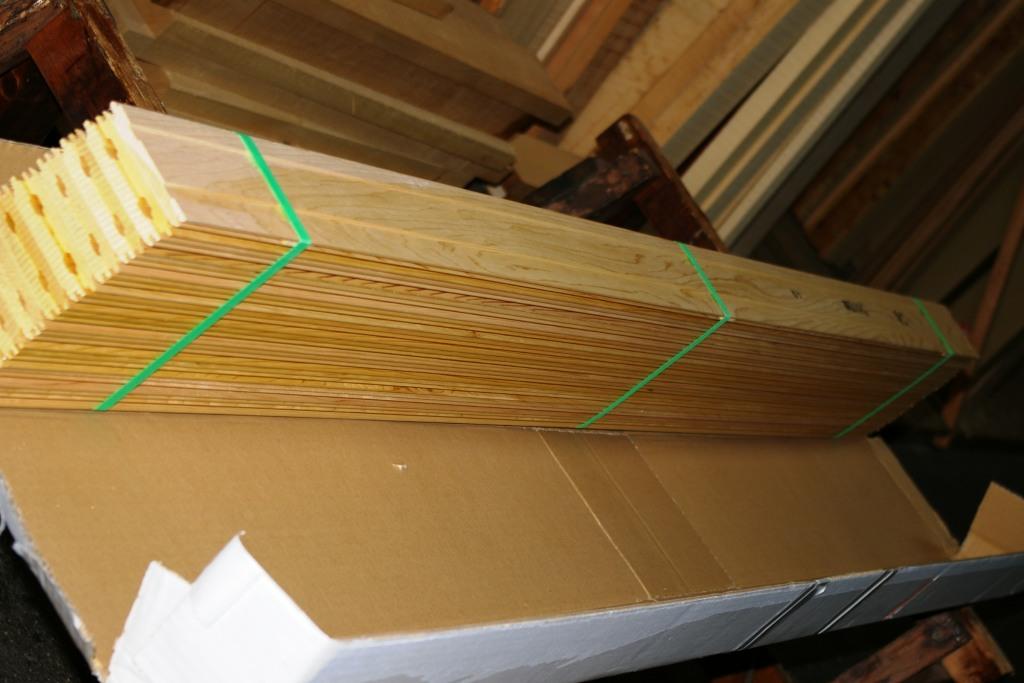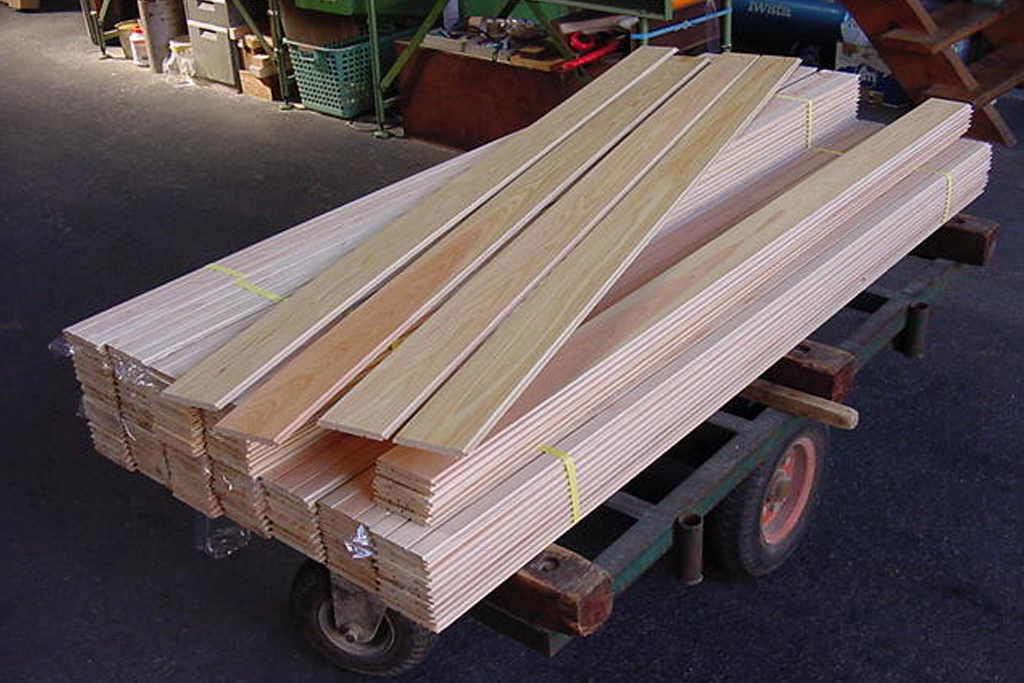Outlet: `beefy` oval tub (sold out)
sorry, SOLD OUT
Another idea, a new outlet tub…

As much as we always strive to optimize the width of our planks, after few months it is inevitable we accumulate a small stock of narrow leftovers.
So, we decided to build a barrel type oval tub without having to pay a yen for the material!
To build this size of tub, 33mm thick planks are more than enough, anyway most of the
wood stripes we had were 45mm thick. It is a shame to plane it down so we decided to go for a `BEEFY` oval tub!

Here is the information and cost about this gorgeous brand new tub.
L1500mm x W700mm x H720mm (external dimensions) 630mm(depth)
knotless natural Asnaro oval shaped bathtub.
bands are in threaded stainless steel wire.
The set is completed with a custom lid split in 2 halves for easy use.
1) AB grade tub (quarter sawn) : 550,000. JPY
2) Packaging: 1650x850x920 wood box: 42,000. JPY
3) Shipment: please let us know your full address so we can take a quote (ocean or air freight)
For the payment, we accept Credit cards thru PAYPAL / or contact us for payment thru wire transfer to our bank account in Japan.
download the drawing in acrobat format: outlet090706.pdf

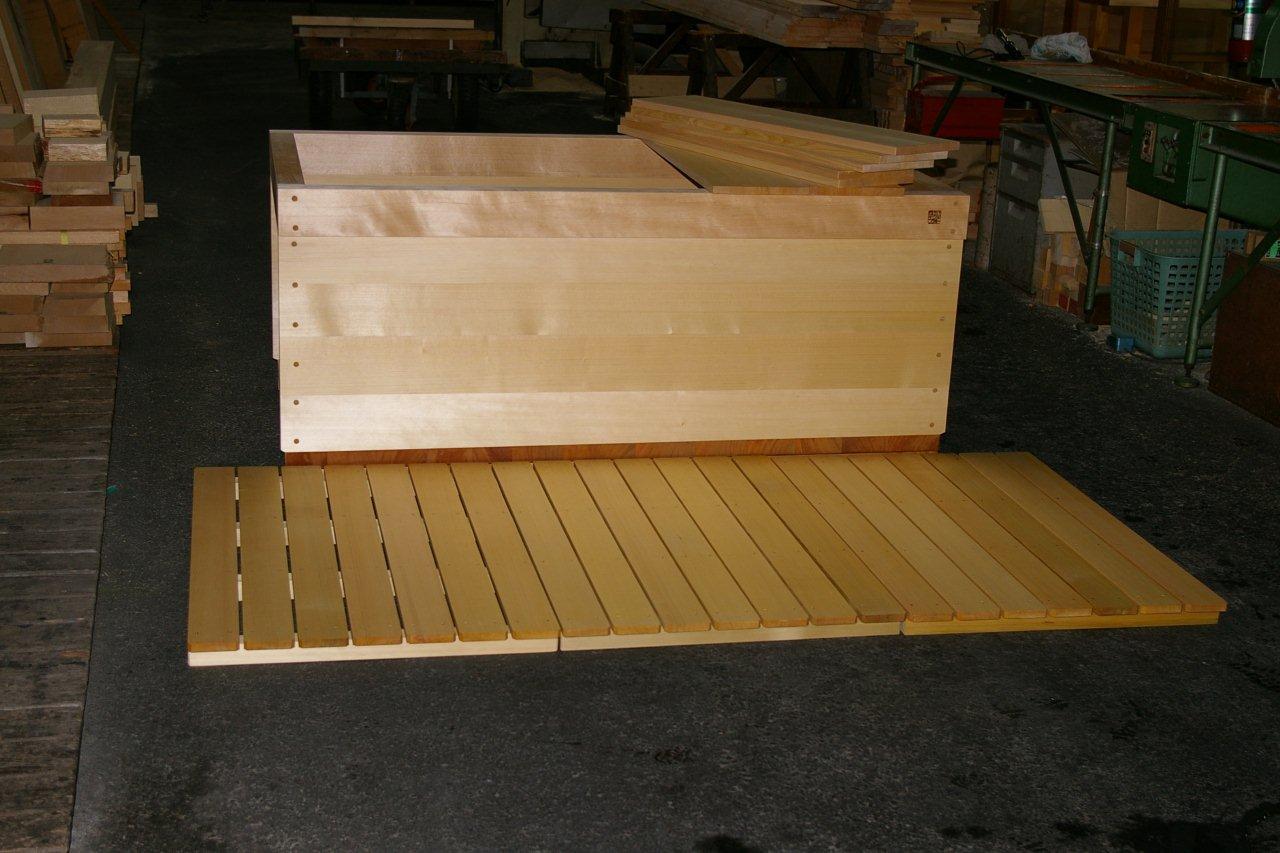
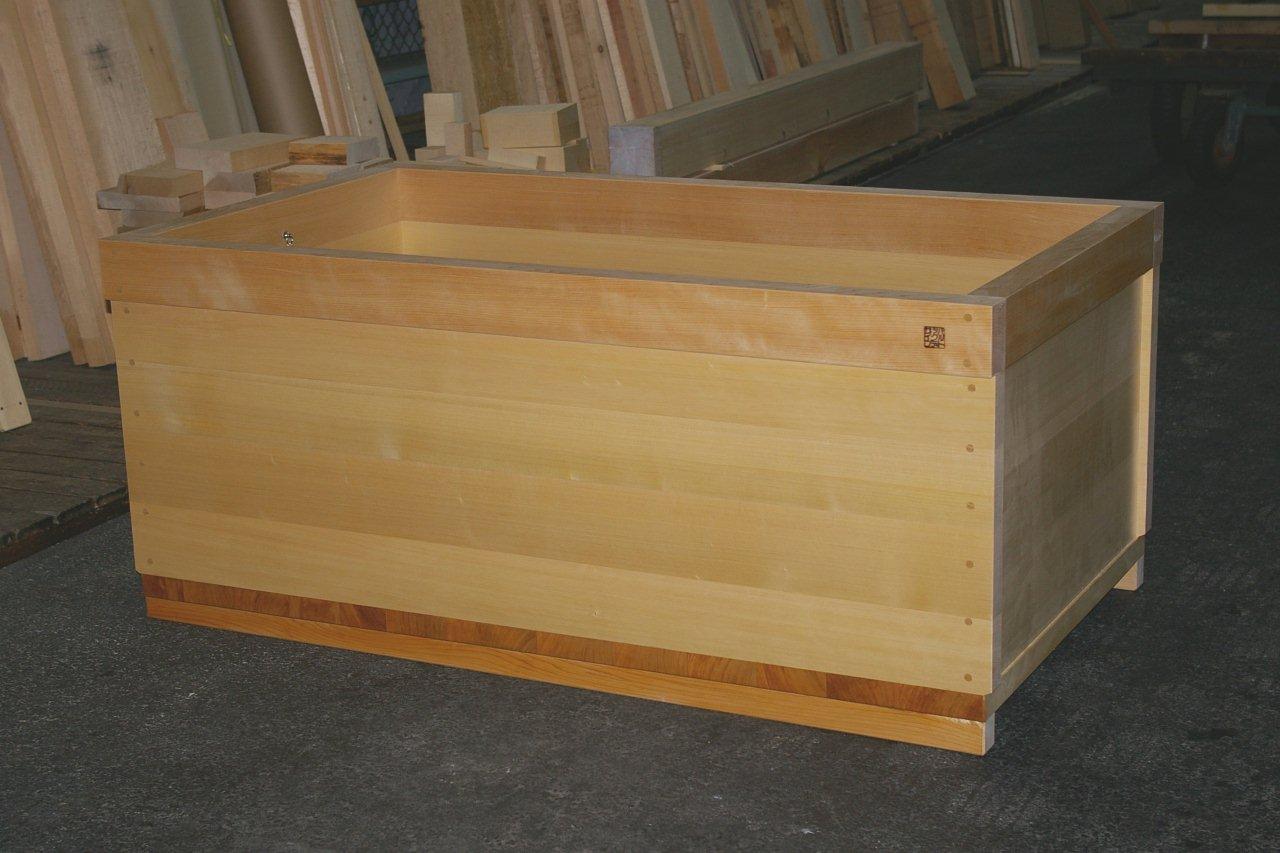
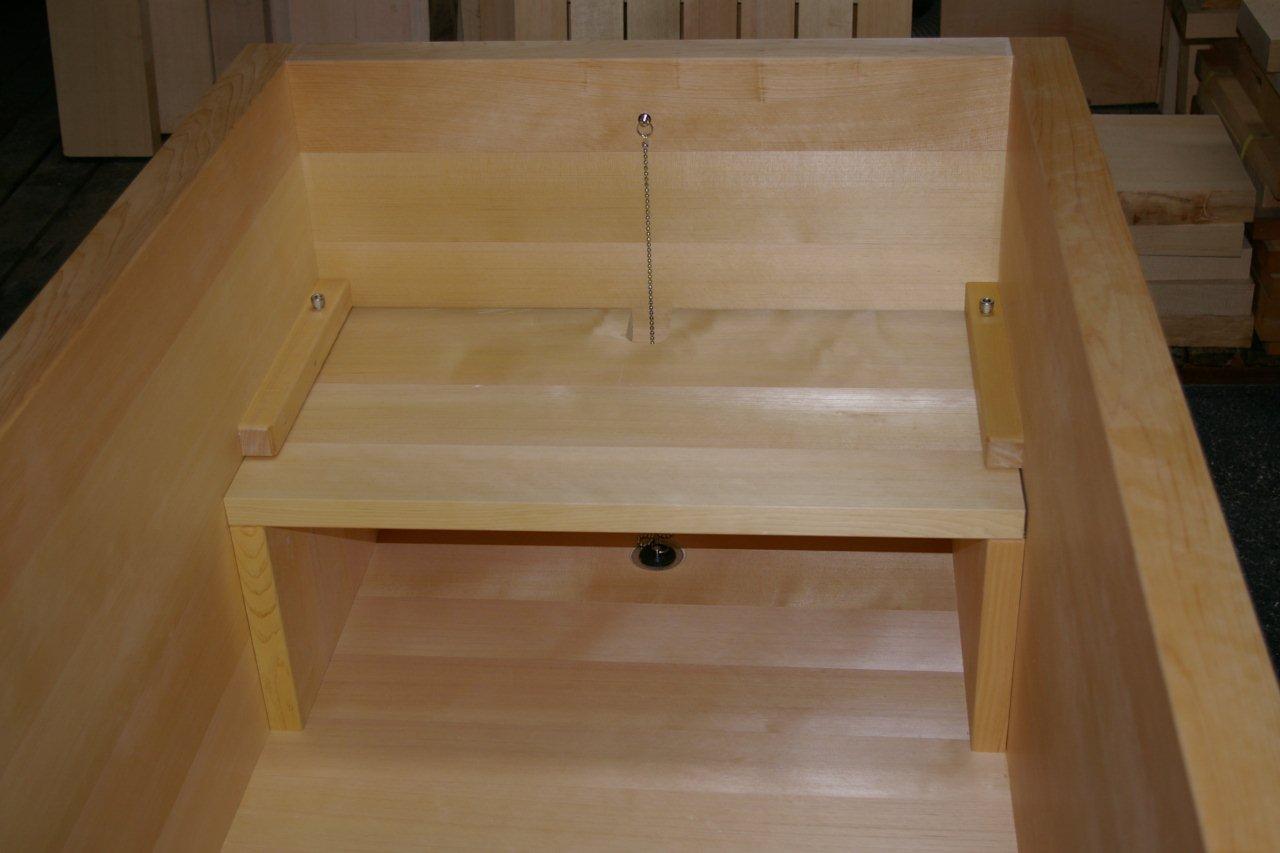
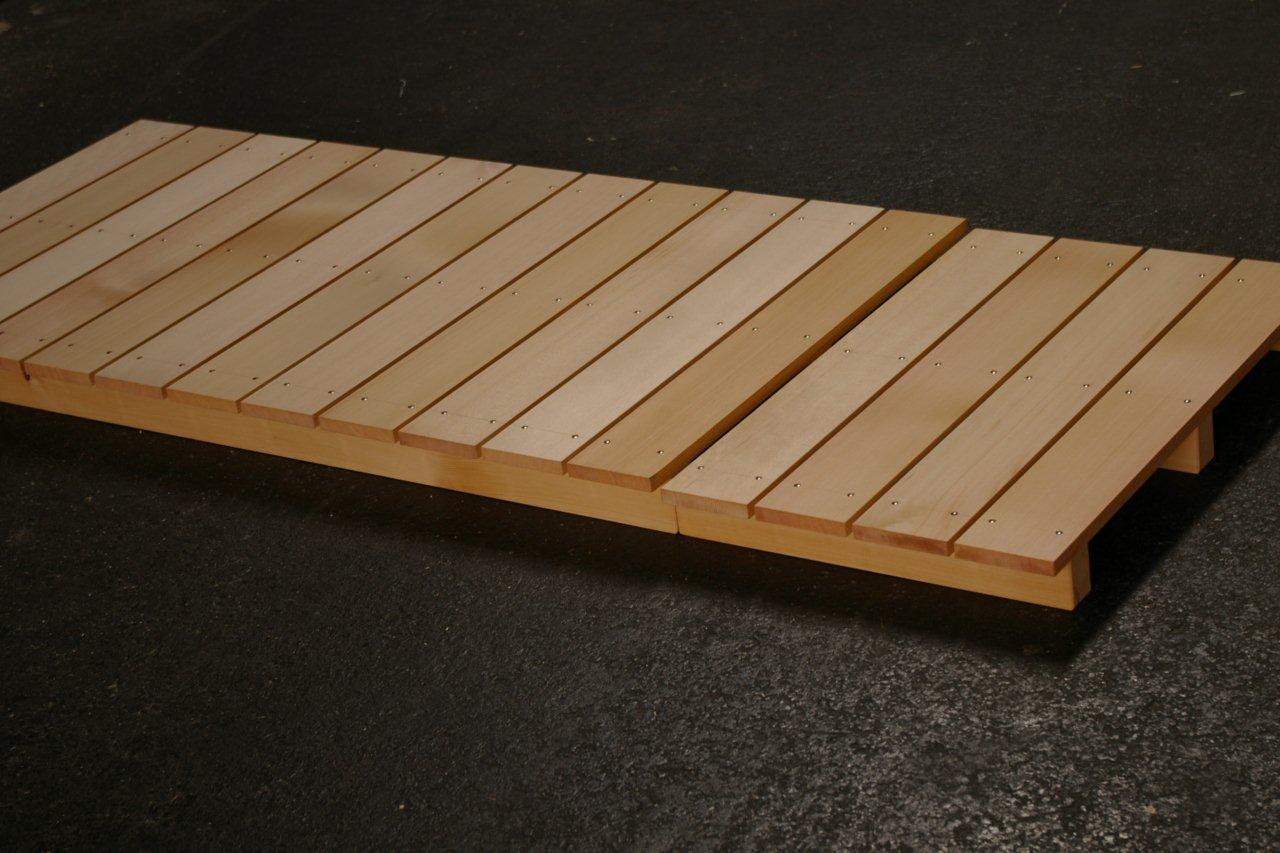
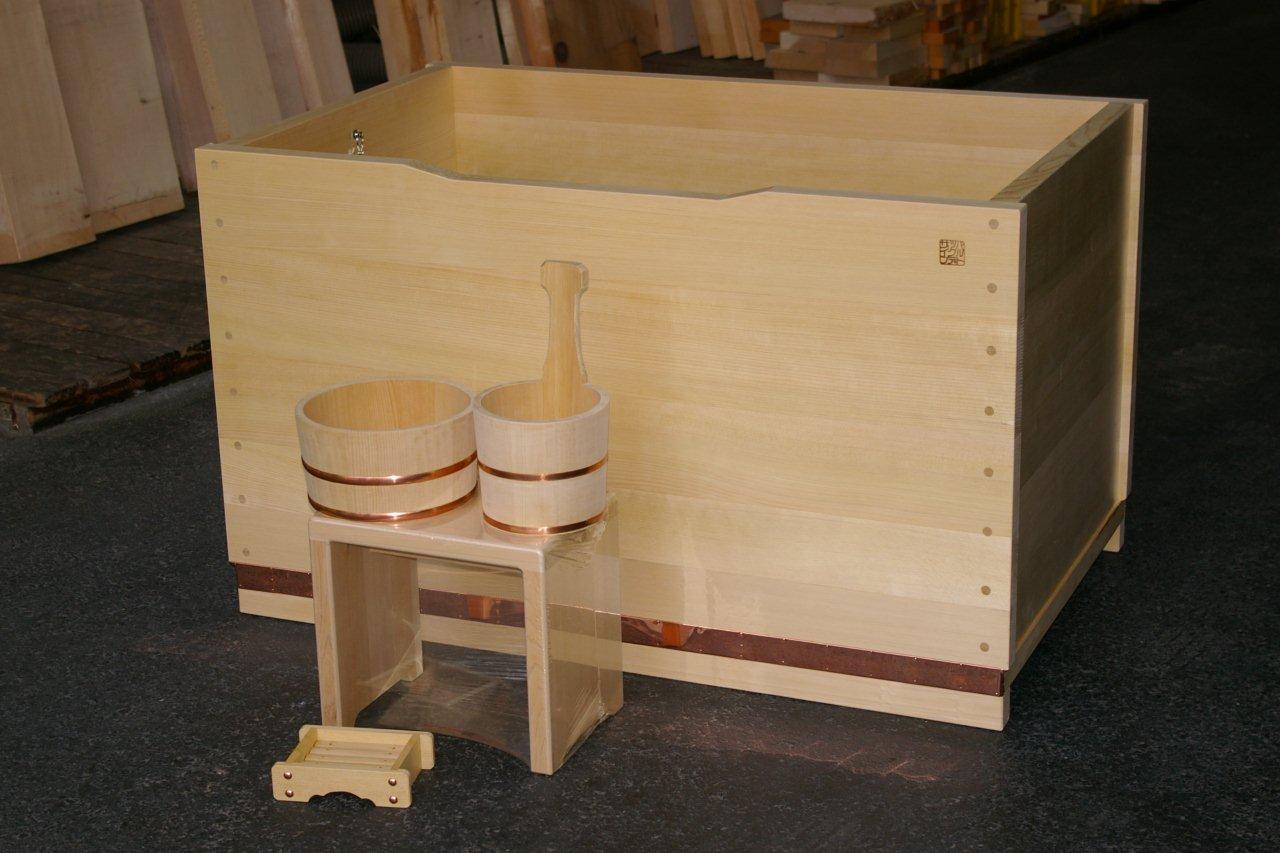
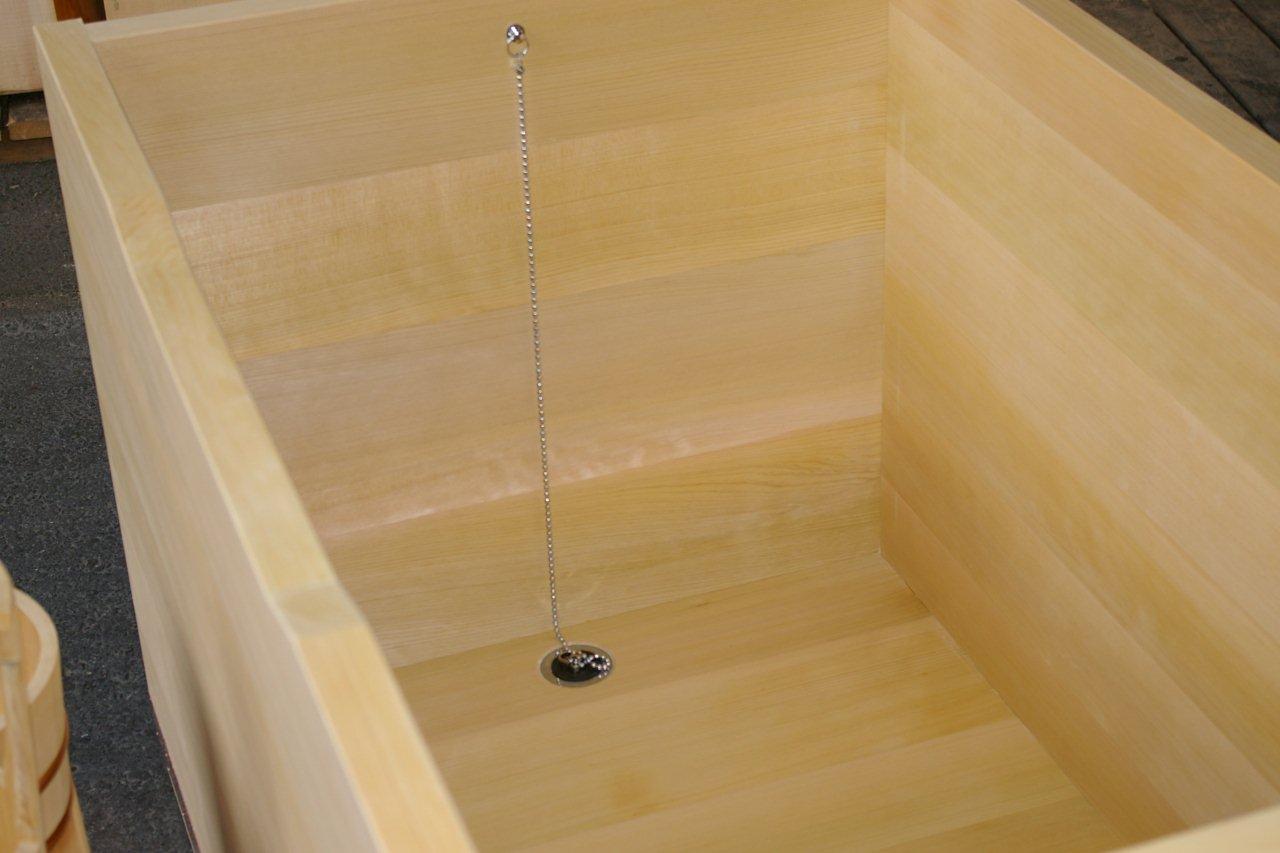
 Wabisabi Culture
Wabisabi Culture


